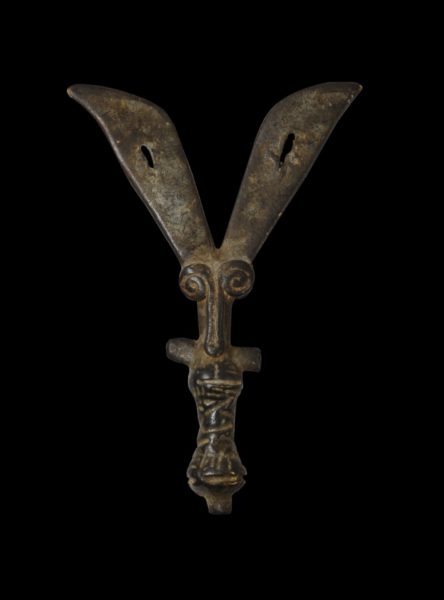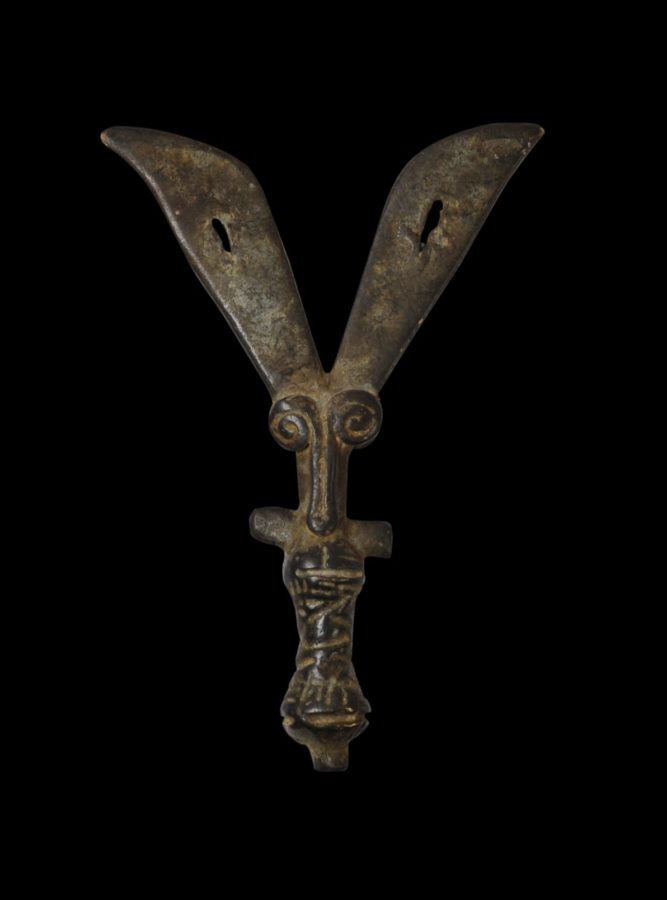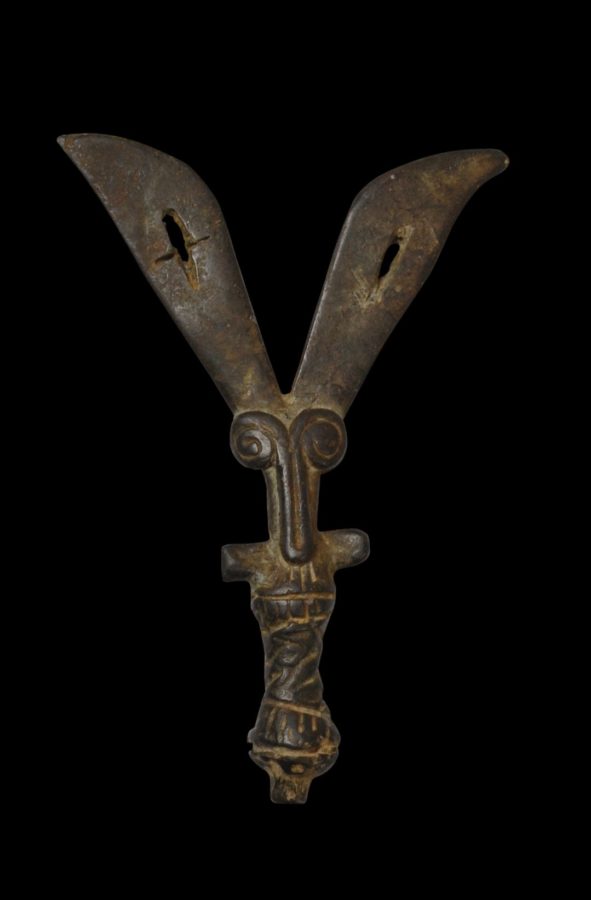Enquiry about object: 4476
Early, Ashanti Gold Weight Modelled on a Bifurcated Knife (Afenata)
Ashanti People, Ghana 17th century
length: 12.3cm, width: 8.2cm, weight: 107g
Provenance
private collection, London.
The form of this interesting Ashanti (Asante) gold weight is based on a double bladed knife but which also has zoomorphic features on both sides. It is also among the earliest type of weights, and is attributed to the 17th century.
Several related examples are illustrated in Phillips (2010, p. 112-113). Vanderstraete (2016, fig, 23) also illustrates several early Ashanti hold weights that have this form.
Personal weights such as these were used in Ghana and elsewhere in West Africa. Principally, small weights were used to weigh gold dust which became the currency used to settle everyday transactions. Each party to any transaction would typically use their own weights – largely because one could trust one’s own weights in the absence of any government certified weighing system. The negotiating process not only would include the cost in gold dust of the items being transacted over but a comparison of weights, debate over the scales used, and the purity of the gold dust (gold often was adulterated with brass filings). Even transactions as rudimentary as buying vegetables in a street market necessitated this process.
Gold weights were cast in brass or bronze. They were used by the Akan who occupy a large part of West Africa including parts of Ghana and the Ivory Coast and include many sub-ethnic groups such as the Baule and the Asante (Ashanti). Gold became an important commodity which gave rise to Ghana’s old colonial name of the Gold Coast. The region was known as the Gulf of Guinea, and in England, a gold coin worth twenty-one shillings became known as a guinea (Phillips, 2010).
The example here has a rich, varying patina, and obvious, significant age.
References
Phillips, T., African Goldweights: Miniature Sculptures from Ghana 1400-1900, Edition Hansjorg Mayer, 2010.
Robbins, W.M. & N.I. Nooter, African Art in American Collections, Smithsonian Institution Press, 1989.
Vanderstraete, A., Monnais Objets d’Exchange: Afrique-Asie-Oceanie, Musee Barbier Mueller, 2016.




